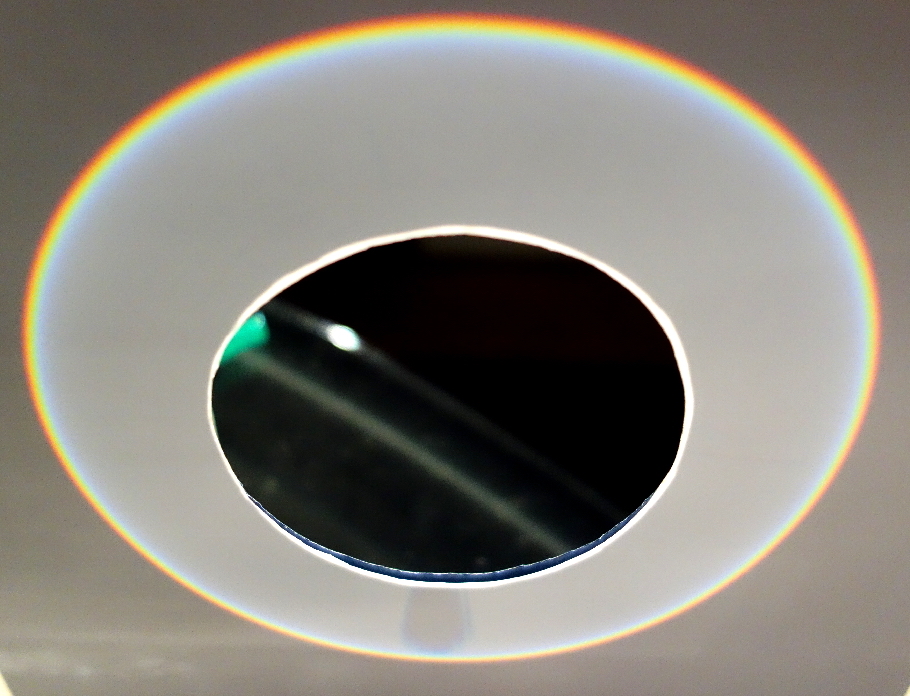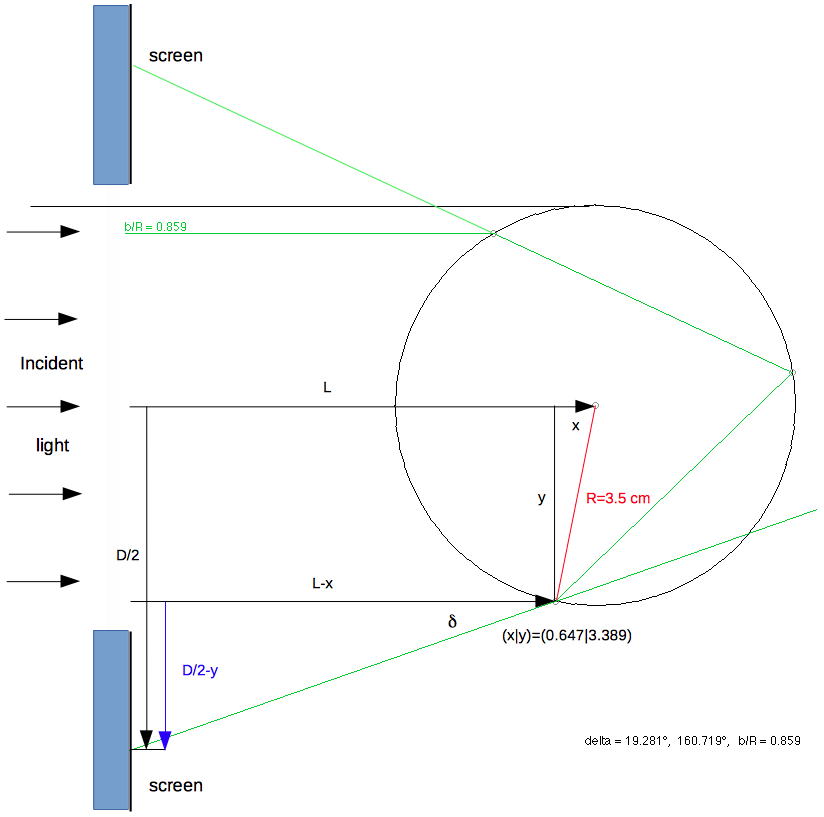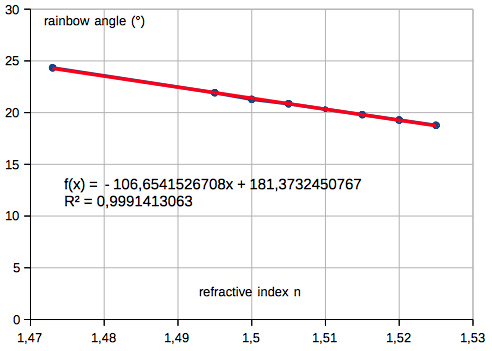Experiment: Glas Ball Rainbow

The light source used was slide projector with halogen lamp.
| To determine the refractive index of the
glass ball (D=70 mm), the effective focal length f from
the center and the back focal length fb were measured (f =
fb+D/2). The result obtained for the index of refraction is n = 1.52 ± 0.02. The supplier of the sphere specifies the material as borosilicate glass. Searching on the internet: The rainbow angle δ of the photo can be calculated, reducing the measured distance L and diameter D of the rainbow by means of the applet:  δ = arctan [(D/2-y)/(L-x)] Result (5 experiments):
The refractive index n is
used to compute the point (x|y) which is necessary
to reduce the measured distances L and D.
Pernter,
in his book, mentions a rainbow angle of 22° 51' =
22.85° for glass.
The applet may be used to calculate the refractive index of the glass from the rainbow angle measured by my experiments:  The result is nglass
= 1.510 ± 0.003, instead of 1.52 by the focal
length.
|
|
|
| (*)
Understanding Ball Lenses (Edmund Optics) Borosilicate Glass |
| Books |
| Pernter, J. M., Exner, F. M.:
Meteorologische Optik; Salzwasser Verlag, Paderborn, 2012;
978-3-86444-515-6; Nachdruck der 2. Auflage 1922. Pernter, J. M., Exner, F. M.: Meteorologische Optik; Wilhelm Braumüller, Wien und Leipzig, 2. Aufl. 1922. |
2016 J. Giesen
updated: 2016, Apr 28

